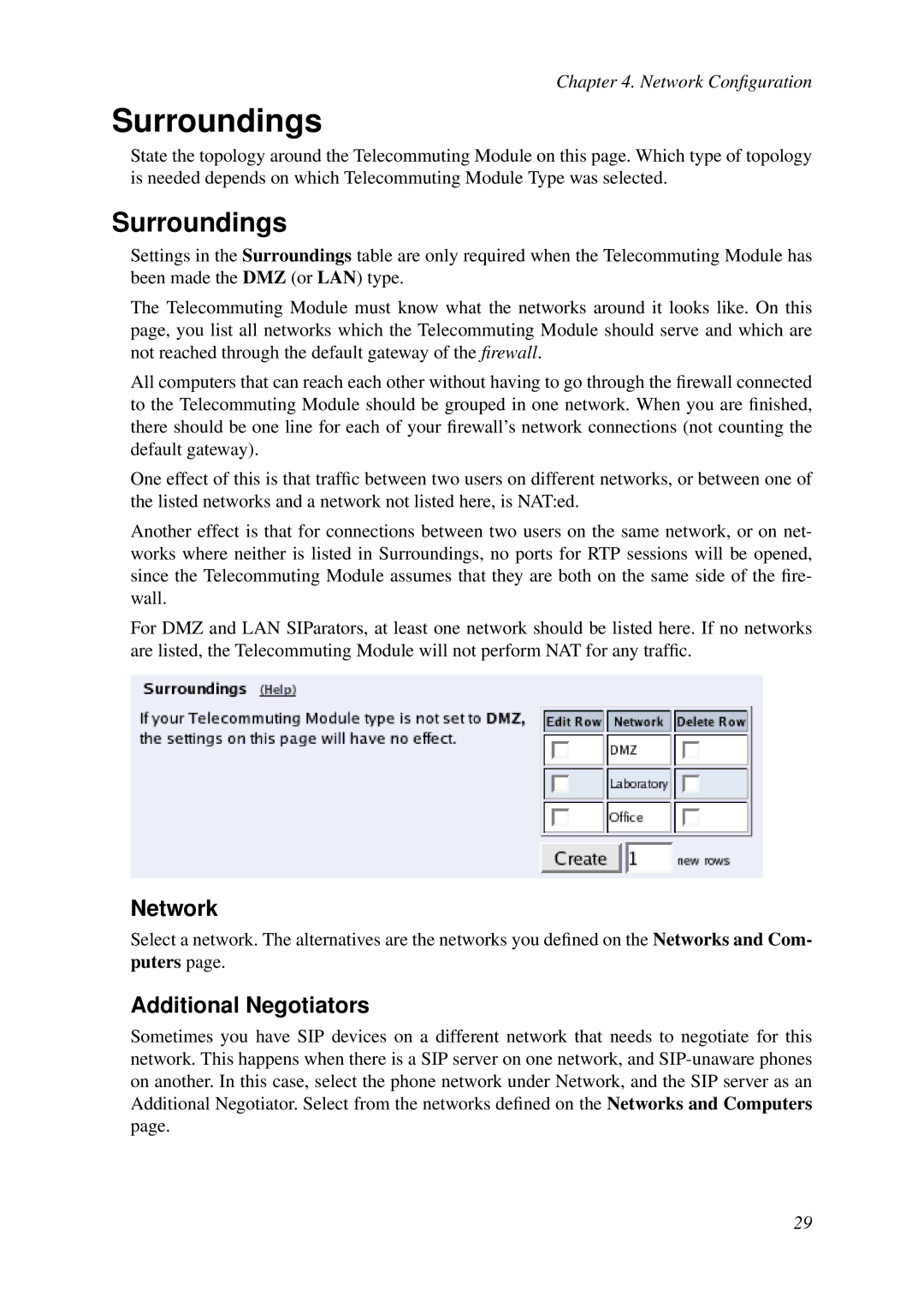
Chapter 4. Network Configuration
Surroundings
State the topology around the Telecommuting Module on this page. Which type of topology is needed depends on which Telecommuting Module Type was selected.
Surroundings
Settings in the Surroundings table are only required when the Telecommuting Module has been made the DMZ (or LAN) type.
The Telecommuting Module must know what the networks around it looks like. On this page, you list all networks which the Telecommuting Module should serve and which are not reached through the default gateway of the firewall.
All computers that can reach each other without having to go through the firewall connected to the Telecommuting Module should be grouped in one network. When you are finished, there should be one line for each of your firewall’s network connections (not counting the default gateway).
One effect of this is that traffic between two users on different networks, or between one of the listed networks and a network not listed here, is NAT:ed.
Another effect is that for connections between two users on the same network, or on net- works where neither is listed in Surroundings, no ports for RTP sessions will be opened, since the Telecommuting Module assumes that they are both on the same side of the fire- wall.
For DMZ and LAN SIParators, at least one network should be listed here. If no networks are listed, the Telecommuting Module will not perform NAT for any traffic.
Network
Select a network. The alternatives are the networks you defined on the Networks and Com- puters page.
Additional Negotiators
Sometimes you have SIP devices on a different network that needs to negotiate for this network. This happens when there is a SIP server on one network, and
29
